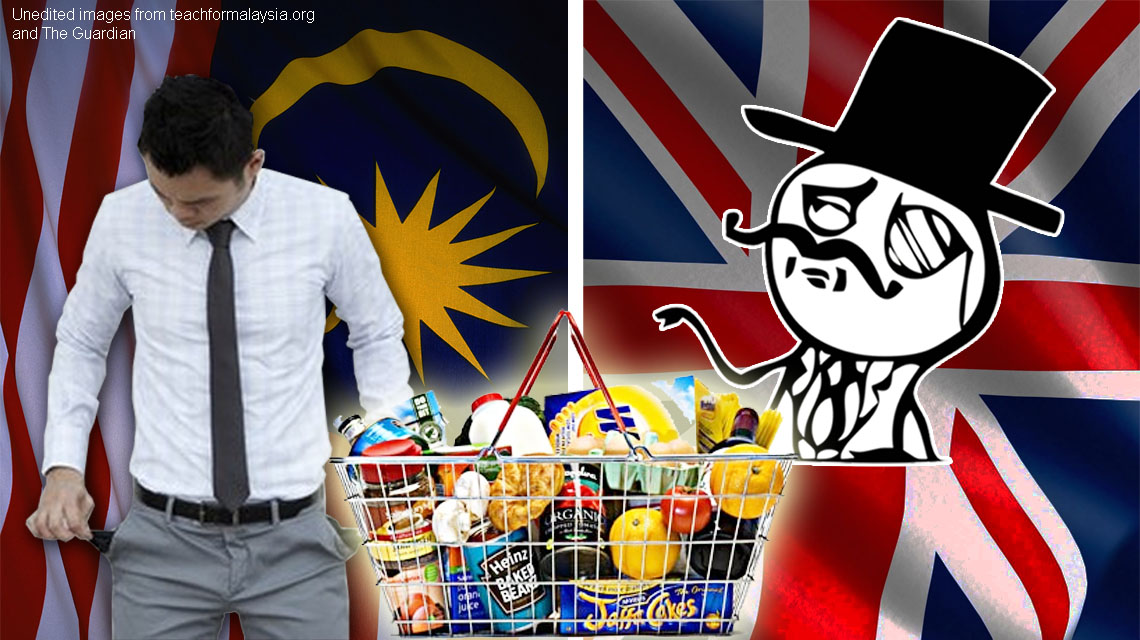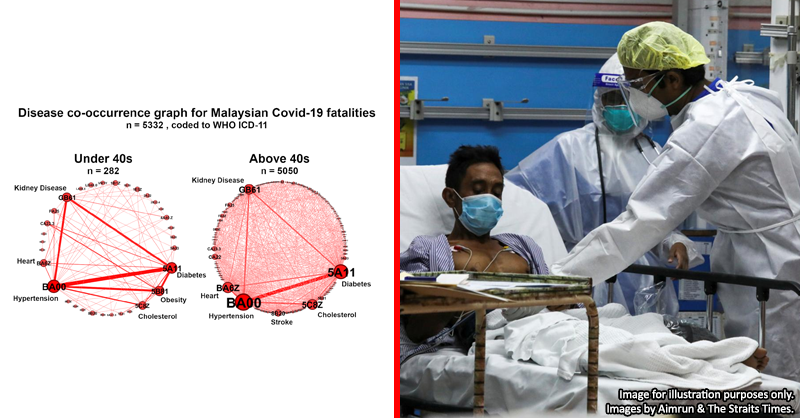6 things that are naturally poisonous but Malaysians eat all the time

- 2.5KShares
- Facebook2.2K
- Twitter30
- LinkedIn41
- Email67
- WhatsApp183
We bet you’re familiar with something called ‘food poisoning’, but today, we’re gonna talk about something else – ‘poisonous food’!
There’s a lot of food out there that can give us problems, but we’re gonna go with the few closer to home. These food don’t exactly scream ‘do not eat’, but instead are naturally poisonous to our body, but we still found a way to safely cook it and put it in our mouths anyway.
1. Tapioca (a.k.a Cassava)
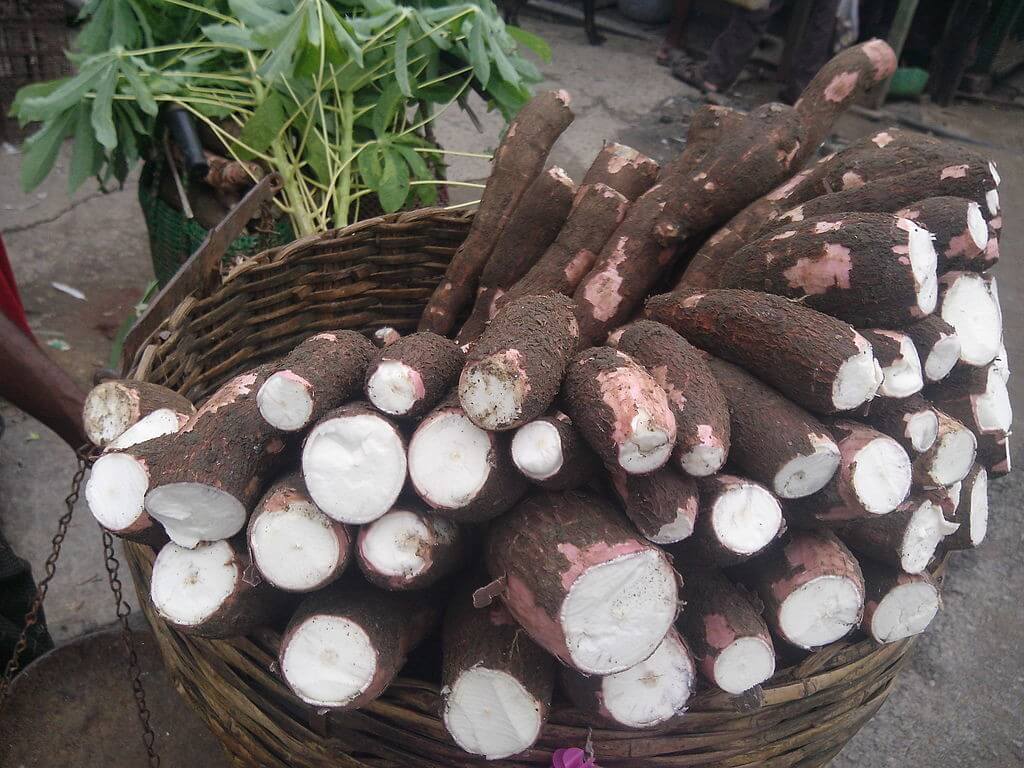

“Say what!? Isn’t that the thing they put in the bubbles in my Chatime Tealive?” Got that right. Now grown nationwide, with Johor having the highest cassava growth rate, the cassava produces tapioca from its roots and used in a huge variety of food products. This plant is also the third most staple food source in the world because it’s easy to grow and drought-resistant.
Why it’s poisonous: The cassava contain trace amounts of hydrogen cyanide. Wait wait… isn’t that the chemical substance used by the Nazis to gas the Jews in WW2. Yikes! HCN is dangerous because the toxicity of cyanide could stop the cells in the body from carrying out their respiratory processes.
The plant doesn’t naturally produce the HCN, but instead the cassava contains a compound called cyanogenic glycosides. Stored inside plants, this compound is released when the plant is harmed or attacked by predators. This food we want to eat fights back by using the enzymes in the plant digest the compound to form HCN and defend the plant.
How to eat without dying: The cassava can be safely consumed by boiling it with water and flour. After it’s boiled, it’ll be left to sit for roughly 5 hours, allowing the enzymes from the flour to neutralize the compound and the HCN in the cassava.
2. Nutmeg
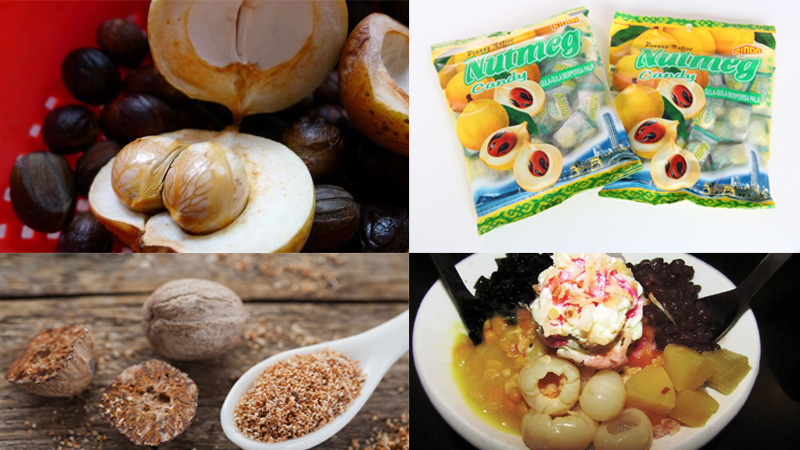
Nutmeg isn’t a native fruit to Malaysians, but it started cultivating here when the British shipped it in during late 18th century. It is now more commonly found in nutmeg farms in Penang, where nutmeg juice/spice is produced, and it’s also frequently eaten with ais kacang. But of course the ones we usually consume are processed/diluted, and contain a controlled amount of nutmeg in it.
Why it’s poisonous: Nutmegs can cause hallucinogenic effects as it contains a psychoactive substance called myristicin. Within 3-6 hours of its consumption, this chemical compound can cause a wide range of problems like convulsions (uncontrollable rapid contractions of muscles), nausea, dehydration, and palpitations (irregular heartbeats), and symptoms can persist up to 72 hours.
5 grams of raw grounded nutmeg already contains 1-2 grams of myristicin, and is labelled as the borderline of nutmeg poisoning. Any higher dosage of myristicin could lead to permanent damage to the liver or death.
How to eat without dying: From what we found out, there is no immediate cure for the psychosis, and most people just take precautions when eating them. Seek medical attention a.s.a.p when poisoned and wait for the effects to wear off. Despite being poisonous, there are still cases where nutmeg is used as a drug to get ‘high’. Don’t get any ideas and go looking for nutmegs yea. 😉

We couldn’t find cases of nutmeg abuse in Malaysia, but because of its potential to be a recreational drug, our gomen have regulations (Food Act 1985) to restrict the amount of nutmeg contained in some ingredients.
3. Keluak (Pangium edule)
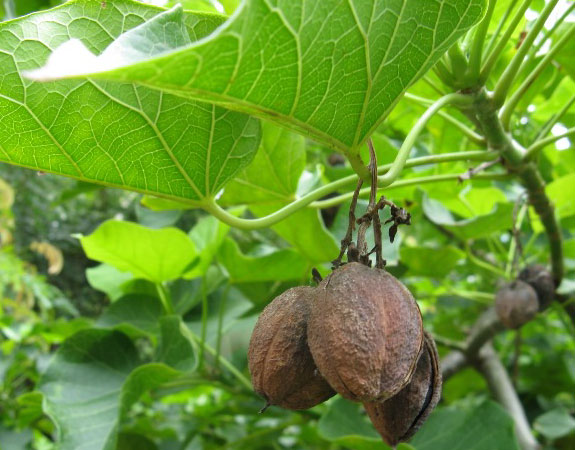
The buah of the keluak looks like a brown nut that grows on trees. The keluak trees are native to Southeast Asia, and mainly used to cook Peranakan dishes called ayam buah keluak. The dish was described having a very earthy and rich taste, accompanied by a ton of grounded spices and rempah.
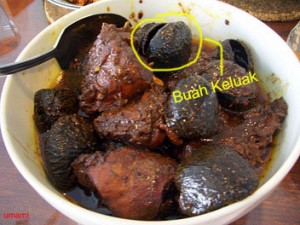
Why it’s poisonous: Although it looks like any regular seed, it also contains traces of hydrogen cyanide (HCN) inside the seed. Like the cassava, consuming these seeds raw could kill you.
How to eat without dying: Unlike the cassava, the keluak has two effectively simple ways to neutralize the HCN in the seeds. The first one is to boil the seeds in boiling water (don’t tambah flour here ah). The repeated process of soaking and boiling the seeds in water removes the HCN because it’s water-soluble, and will seep out of the seed and into the water. This process has to be repeated over 3 hours to completely remove the HCN. Another way would be to let it ferment, by burying them in ashes in a pit on the ground. This removes the toxicity in it, and may also be why it has it’s earthy taste.
4. Star Fruit (Carambola)
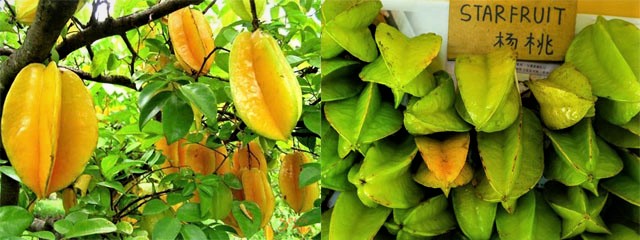
This blur writer just learned while researching this topic that star fruits ARE native to Malaysia. The start fruit is rich in vitamins, antioxidants, and potassium and is usually eaten once plucked from the tree, the entire fruit can be eaten raw when ripe.
Why it’s poisonous: The star fruit contains not only one, but 2 toxins that are harmful to the human body. The first is caramboxin, a neurotoxin that can cause severe damage to people with kidney problems. If consumed, it causes hiccups, nausea, vomiting, seizures, and death to people with kidney diseases. The second harmful compound is oxylic acid. It is toxic because of its ability to cause kidney failure by precipitating solid calcium oxalate (the component kidney stones are made of), blocking the urinary tract.

How to eat without dying: So, if you have a kidney problem, avoid eating star fruits lah. Because it can gradually cause your kidney to fail. But if you’re thinking ‘yay I don’t have kidney problems, gonna spam eating star fruits’, please eat in moderation because there’re cases where star fruit caused acute renal failure in a patient with no history of kidney problems.
5. Sayur Manis (Sauropus Androgynus)

Walao! This veggie we always eat wan also made it to the list. Also called cekur manis/katuk, the Sauropus is commonly stir-fried and eaten here in Malaysia. Originating from Borneo, the Sauropus is now planted worldwide and is a popular dish in many parts of Asia. Besides eaten as a meal, the Sauropus are traditionally used as medicine to supplement the production of breast milk in new mothers and also treatment for impotence in men.
Why it’s poisonous: There isn’t a confirmed compound that causes the poisoning. We’re not plant scientists, and even the scientist running studies about this plant are also unsure. But we’re writing this because there’re cases where people get lung disease when they ate this plant.

It’s been reported that there was an outbreak of respiratory problems in Taiwan in 1995 after consuming the Sauporous raw as one of those fad diets back then. These patients were diagnosed with Bronchiolitis (inflammation and congestion in branches of tiny airways in the lungs).
But recent studies speculate that the cause of all this is due to something called papaverine. Pharmaceutically used as a drug for treatment of erectile dysfunction and high blood pressure, it causes blood vessels to open up, which could be a possible explanation as to why the airways in the lungs get inflamed.
How to eat without dying: But if you still want to stay manis with this sayur, all you have to do is cook it properly because the toxicity is rendered inactive by cooking.
6. Ginkgo Seeds
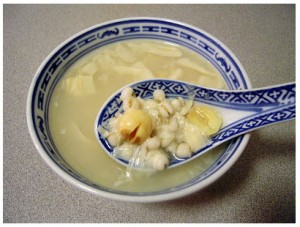
We’ve probably seen these yellow seeds in ‘fu chuk’ barley or at the bottom of a chawanmushi. The ginkgo seeds actually comes from ginkgo trees and are native to China. But these ginkgo trees really stink and its smell is frequently compared to vomit. The odor exist because the seeds would ripe and fall, then rot on the ground to produce the extremely pungent smell. D:
Why it’s poisonous: The toxin inside ginkgo seeds are called ginkgotoxin. The effects of this toxin usually results in severe vomiting and diarrhea, skin allergy (the skin on some parts of the body peels), seizures, and also death. No wonder this writer always stomach ache lah.
When consumed, the toxin interferes with the production of vitamin B6, leading to neurotransmitters in the body going haywire, thus the seizures. Consumption of 5-10 raw seeds in one sitting can lead to the symptoms above. And it you think you can safely eat it after their you’re done cooking them, you are…

How to eat without dying: Ginkgotoxins can’t be destroyed by heat. That means cooking/boiling them won’t remove the toxin. Then how to makan!? Although toxicity of ginkgotoxin can be reduced by replacing the body’s supply of vitamin B6, but the best preventive measure would still be a controlled intake of ginkgo.
Actually there are a gazillion poisonous stuff that we eat all the time
There’re countless lists of food that have the potential to kill us. And because the earth potentially spits out a new species of plant almost every other week, although not all are poisonous the numbers can increase. If we’d continue listing them, we scared later you’ll go on a water only diet.

Heck, even drinking too much water can kill us because something like water intoxication exist. And because not everything can be solved by boiling, and we may not entirely know which food is bad for us. If you’re like this writer who loves poisonous food but don’t know how to eat them without dying, probably the best idea for us to do is to eat in moderation and be careful of what put in your mouth!
- 2.5KShares
- Facebook2.2K
- Twitter30
- LinkedIn41
- Email67
- WhatsApp183

